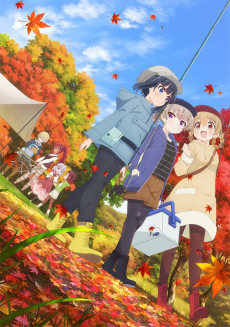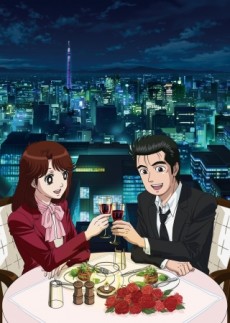TSURIKICHI SANPEI
STATUS
COMPLETE
EPISODES
109
RELEASE
June 28, 1982
LENGTH
25 min
DESCRIPTION
Mihira Sanpei talks with a Tohou accent and is a down-to-earth boy with a cheerful and optimistic personality. However, when it comes to fishing, he becomes very serious and is a youth who enjoys fishing more than anything else. The village where he lives in is a natural environment which provides different kinds of fishing challenges. Despite his lack of experience, Sanpei has a first-rate sense with regards to fishing and decides to maxmise his potential by entering into different fishing contests. As he faces various challenges, he learns to solve difficult problems and learn from his mistakes to the extent that he is able to fish anything out of the waters. Along the way, he encounters all kinds of rivals and companions who increase his experience points and help him in his growth.
(Source: Anime News Network)
CAST

Sanpei Mihira

Masako Nozawa
EPISODES
Dubbed
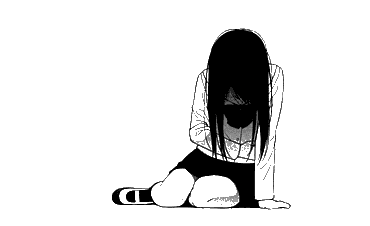
Not available on crunchyroll
RELATED TO TSURIKICHI SANPEI
 MANGA ComedyTsurikichi Sanpei
MANGA ComedyTsurikichi SanpeiREVIEWS

davidman001
70/100Who knew an anime about fishing could be so damn entertaining.Continue on AniList
As far as I’m aware, Tsurikichi Sanpei is the first anime about fishing. In fact, other than a small handful of titles, there aren’t that many anime solely about the sport. We recently had Houkago Teibou Nisshi back in 2020, and in 1997 there was Super Fishing Grander Musashi, both of which featured fishing as the main focus. But I struggle to name more besides those and a few others. Perhaps it’s the slow and monotonous nature of fishing that is hard to translate into entertainment—something I assumed before getting into Sanpei. I couldn’t have been more incorrect. So how does Tsurikichi Sanpei make fishing entertaining? And does it live up to the expectations of being one of the first fishing anime?

Tsurikichi Sanpei adapts a popular 1973 fishing manga under the same name, written and illustrated by Takao Yaguchi, into 109 episodes. It follows the experiences and encounters of Mihira Sanpei on his adventures to learn all there is to know about fishing. The anime follows an episodic structure with sets of multi-episode arcs ranging from 3-6 episodes interspersed between single episodic stories. Tsurikichi Sanpei is in fact so episodic that there is no overarching plot whatsoever, with the only semblance of one being Sanpei’s quest to find his father after an accident out at sea that left him with permanent brain damage, wandering throughout Japan with no memory of who he or his family is. However, this plotline is rarely of importance for the episodic stories because Sanpei is instead more interested in focusing on the fishing aspects. This is not a bad thing at all as this style of storytelling lends itself to a laid-back experience which suits its TV Anime format. Fishing takes centre stage in every episode, including everything from fishing techniques to fishing locations and, of course, the fish themselves, thus creating both an entertaining and educational experience at the same time.
From analysis about fish and their habitats to exploring a diverse range of different fishing techniques, Sanpei never fails to deliver an educational perspective to the bulk of its episodes. Hell, some of the techniques shown seem so obscure that I can’t help but be fascinated. Episodes 40 to 42 are a great example of this. In this story arc, Sanpei is taught the technique of catching mudskippers using a unique spiked fishing hook, guided by a master of the art. The episode goes into great detail about the patience and immense precision needed to perform this technique, and over the span of 3 episodes we watch as Sanpei slowly masters it. I love these longer multi-episode stories as they convey precisely the patience and time investment needed in fishing. A lot of the single episodic stories weren’t that interesting to me; most didn’t take the time to expand on the information presented. In comparison, it felt like Sanpei was able to breathe and take its time when it came to these longer stories. Though with that being said this wasn’t an issue I found in the second half because many episodes began to focus more on dramatic character stories.



 (From episodes 40 to 42)
(From episodes 40 to 42)These educational moments are, of course, intertwined with the stories being told in each episode. Episodes 40 to 42 were accompanied by a competition with the son of a rival mudskipper fishing master, which provided the much-needed drive for Sanpei to master the skill himself. Episodes can vary in storytelling; some can be as simple as a laid-back story about learning a new fishing technique, while others can be blood-pumping high-stakes insanity. For example, Episode 53 is a pretty laid-back episode about catching a golden koi and explaining the phenomenon behind its colour. Then, the stretch of episodes immediately following, episodes 54–57, has one of the craziest moments in the whole anime. The story starts off with Sanpei participating in a competition to troll the biggest marlin (a type of fish) as he meets a veteran fisherman who explains that years ago he and his friends were attacked by a massive marlin, which not only killed his friend but also damaged one of the old man’s eyes, ripped off his arm after it was caught in the fishing line, and was violently attacked in the stomach. After hearing this, Sanpei makes it his goal to find that same massive marlin. So eventually they find the fish out in the ocean, made clear by the fact that it seemingly recognised the old man after he joined alongside Sanpei. After a long battle to maintain the Marlin, the old man stands directly in front of it on his boat, and in a fit of rage, the Marlin jumps up and fucking leaps into the boat, causing a massive chunk to rip off, and continues to bash into the boat till it’s completely tired out, to which then the old man pierces its eye and finally kills it, but then immediately following a group of sharks appear, so Sanpei and the old man have a battle with the sharks so they don’t eat the dead marlin still in the water. After the insanity that was this stretch of episodes, the following episode is just a simple story about a unique use of bait to catch a certain fish. The way Sanpei can jump from laid-back stories detailing unique techniques or analysing fish to pure insanity with battles against fish makes getting into each episode always exciting.

 (From episode 53)
(From episode 53)

 (From episodes 54 to 57)
(From episodes 54 to 57)What makes some of these episodes so suspenseful is the inherently erratic nature of fish. Like in the aforementioned Marlin episode, when the Marlin suddenly pulls on Sanpei’s rod, it causes him to almost fly out of his trolling chair. There are many scenes like this throughout the anime that play on this unpredictableness. I’m a huge fan of both the laid-back educational episodes and the suspenseful, stakes-driven episodes. All of these aspects are what create such a unique experience where it’s both educational and entertaining, which is how Sanpei manages to make learning about fishing a very enjoyable experience.
Sanpei himself is a fun character to follow. He is incredibly talented and knowledgeable about every aspect of fishing. Yet despite this greater knowledge, he’s always very humble. We get to see throughout the series Sanpei sharing his knowledge of fish with others, like in episode 83, wherein Sanpei is trying to teach his friend Yuri how to catch a fish using a dragonfly when a man walks up to them and asks if he can watch. Sanpei, realising the man knows this technique of fishing, immediately offers for the man to join in with them, and they spend the rest of the episode getting to know each other and enjoying their time fishing together. With that being said though, there are plenty of episodes about a technique or unique fish that Sanpei knows nothing about, yet he is always willing to learn about them. The mudskipper episode I mentioned before is a good example of this. This is an important aspect of what makes Tsurikichi Sanpei so entertaining. We, the audience, are learning these techniques and analyses about fish alongside Sanpei. It’s the opposite of another edutainment anime I love, Oishinbo, where Yamaoka is often the one telling others the facts and information about food.



 (From episode 83)
(From episode 83)Riffing off of the Oishinbo comparison for a moment; one aspect of Oishinbo that I like a lot in comparison to Tsurikichi Sanpei is a sense of community. Sanpei meets a lot of people throughout the series, yet almost every character is self-contained within their respective episodic stories. In comparison, Oishinbo has many characters we meet throughout the series who reoccur, even if for only an episode or two. While I personally love this aspect of Oishinbo’s storytelling, it’s only fair to point out that the lack of said aspect in Tsurikichi Sanpei puts greater emphasis on other aspects. Like the aforementioned focus on the different techniques, unique locations, and different analyses of fish and their habitats, the characters within these stories are used to facilitate these ideas. This approach is entertaining in its own unique way. Though this isn’t to say the characters in these self-contained stories aren’t good. My favourite character is from the stretch of episodes 69–71, where Sanpei met a musician who ran away from this past life of mastering a complex netting technique but was convinced to reconcile his relationship with his father, eventually leading to him passing on his knowledge of this technique to Sanpei. It was a genuinely heartfelt tale and is one of my favourite stretches of episodes.



 (From episodes 69 to 71)
(From episodes 69 to 71)A surprisingly prominent aspect of Tsurikichi Sanpei are tales of death. Sanpei meets many characters who either end up dying or have a family member who dies. Around the second half of the anime, there are about 7 to 8 episodes that feature a prominent character's death. In these episodes, Sanpei is understandably horrified by these deaths; however, these emotions are not felt nor expanded on in subsequent episodes due to the nature of the anime being purely episodic. Though, these little details really don’t affect the greater enjoyment of the anime, especially when it makes itself clear what the main focus is.
Another aspect of Tsurikichi Sanpei’s storytelling is the occasional episode with commentary on the social aspects of fishing, such as proper etiquette when fishing around other fishermen. In episode 82, a fisherman was drilling too many holes at an ice lake and being an asshole to the people trying to warn him. Eventually, the ice cracks and causes a huge chunk to fall off, dragging the man down with it. This episode highlights the importance of being aware of those around you and the rules one should follow for the sake of everyone’s enjoyment. However, my favourite episode that tackles social topics has got to be episode 76, which focuses on debunking the myth that women (particularly middle-aged women and wives) are “unsuitable” for fishing. This episode has Sanpei and his friends meeting an older woman fishing at a lake who explains to them that she takes turns with her husband going on vacation out to this lake every year, with the other going to work to support each other financially. At the end of the episode, Sanpei admits that “thinking fishing isn’t suitable for women is not right” and is glad that he was able to talk and become friends with the older woman. Based as fuck episode, one of my favourites. There are also episodes about local folktales, like lake monsters or historically significant people and deities. These episodes are a great diversion from the usual educational episodes, which helps keep things interesting.

 (From episode 76)
(From episode 76)Tsurikichi Sanpei has a strong visual style. With gorgeous background art and a focus on detailed fish, the anime does a great job translating the gorgeous art style of the manga into animation, keeping in mind that the art of Tsurikichi Sanpei’s manga is incredibly detailed and that naturally there’ll be cut corners when it comes to animation. The background colours are often muted, but it creates a good contrast in scenes where the colours are more vivid, especially during the freeze frames. Tsurikichi Sanpei, like many anime at the time, took influence from Dezaki’s visual style. This can be seen most commonly in Sanpei with the extensive use of freeze frames to highlight the details on fish when they’ve been caught. In general, Tsurikichi Sanpei puts a lot of emphasis on the detail of the fish, utilising different techniques to achieve a consistent quality of detail. In contrast, the character designs are kept simple yet recognizable. The freeze frames also emphasise the poses Sanpei does as he fishes. Actually, the pose Sanpei does as he’s pulling up fish is an important piece of Japanese pop culture, and you can find it referenced throughout anime and Japanese media.
I’m unfortunately not that knowledgeable enough about the staff behind Sanpei to confidently describe their relations and contributions to the project in detail; however, I do highly recommend anyone who’s interested have a look at the staff list, as there are some interesting names behind this anime.


 (An assortment of screenshots showing off the freeze frames.)
(An assortment of screenshots showing off the freeze frames.)





 (An assortment of screenshots showing how gorgeous Sanpei's background art can be.)
(An assortment of screenshots showing how gorgeous Sanpei's background art can be.)Being one of the first anime about fishing, Tsurikichi Sanpei gets a lot of what makes for an entertaining series about fishing on its first try. By focusing on an educational style of storytelling, it’s able to cram every episode with new experiences and information. By being entirely episodic, it’s able to keep each episode fresh with new ideas and stories. Tsurikichi Sanpei’s attention to detail with the fish, not only in its art but also in its ability to analyse fish, is endlessly fascinating. As someone who doesn’t have much interest in fishing in real life, I still had a blast with everything this anime had to offer. If Tsurikichi Sanpei sounds like something you’d be interested in, then I absolutely recommend giving it a try. Thank you for reading my review.


SIMILAR ANIMES YOU MAY LIKE
 ANIME ComedyHoukago Teibou Nisshi
ANIME ComedyHoukago Teibou Nisshi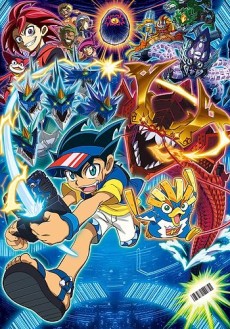 ANIME ActionBakutsuri Bar Hunter
ANIME ActionBakutsuri Bar Hunter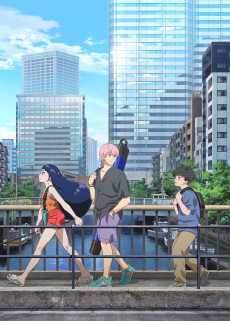 ANIME DramaNegaPosi Angler
ANIME DramaNegaPosi Angler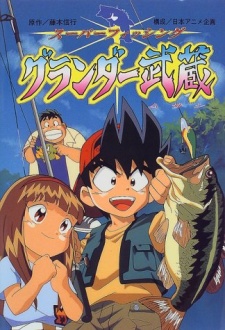 ANIME AdventureGrander Musashi
ANIME AdventureGrander Musashi
SCORE
- (3.35/5)
MORE INFO
Ended inJune 28, 1982
Main Studio Nippon Animation
Favorited by 33 Users

